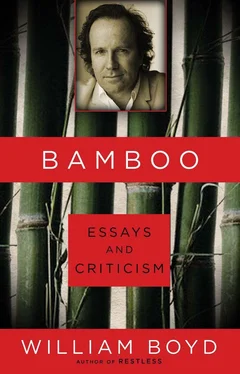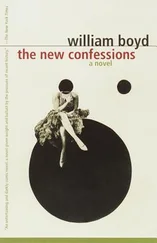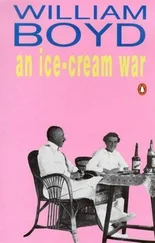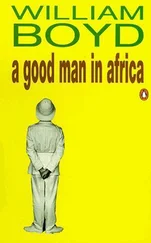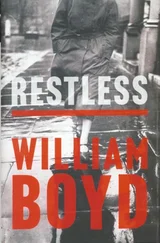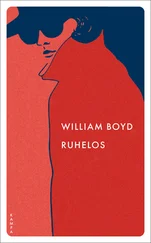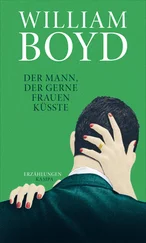1999
Charles Dickens(Introduction to Martin Chuzzlewit)
The first problem about Martin Chuzzlewit is its title. “What’s in a name? that which we call a rose/By any other name would smell as sweet,” opines Juliet, and normally I would agree, but I feel that in the case of Martin Chuzzlewit the axiom does not neatly apply. Martin Chuzzlewit is one of those novels that would benefit from a title change. It is a problem that emerges only once the book has been well begun, as a vague niggle at first, then a growing worry, and then, by the time one has reached the end, it is a full-blown puzzler. Why on earth is the book called Martin Chuzzlewit? More precisely: The Life and Adventures of Martin Chuzzlewit? Who, in all honesty, gives a fig about young Martin — whose story, I roughly calculate, probably occupies barely a fifth of the text — so why should the book be named after him? When one thinks of the great eponymous Dickens novels— Oliver Twist, David Copperfield, Nicholas Nickleby — it is apparent that Martin Chuzzlewit, though it would seem to be in the same family, is manifestly not. And this misnomer goes some way to account, I think, for the novel’s surprising though significant neglect. For one of Dickens’s greatest novels it is, without doubt, under-read and undervalued. It is as if it has been placed, as it were, in the wrong pigeon-hole: it shouldn’t be with Oliver Twist and David Copperfield but with, say, Great Expectations or Our Mutual Friend. Readers are expecting Dickens to offer them something they are familiar with, and something that he does unsurpassably well, and in the event the central character is almost insignificant, and was there ever such a bland pair of lovers as young Martin and Mary? It is not conclusive evidence, though telling enough all the same, but in a recent biography of Dickens the index cites only nine fleeting references to the novel, the longest being a couple of paragraphs dealing with the American episodes and their sources. Clearly, Martin Chuzzlewit is something of a square peg in a round hole; Martin Chuzzlewit is an odd fish.
And yet at the same time Martin Chuzzlewit is, I think, the most sheerly funny of all Dickens’s novels, with a teeming energetic humour that continues to delight some hundred and fifty years after its first publication. It contains enduringly celebrated Dickens creations, notably Seth Pecksniff and Mrs Gamp, a whole gallery of brilliantly rendered minor characters and writing of a verve and vigour, and imaginative audacity, that is the equal of anything else in the oeuvre. Dickens himself was highly pleased with the book as he was writing it. “You know, as well as I,” he confided to his friend and future biographer John Forster, “that I think Chuzzlewit in a hundred points immeasurably the best of my stories. That I feel my power now, more than I ever did. That I have a greater confidence in myself than I ever had. That I know, if I had health, I could sustain my place in the minds of thinking men, though fifty writers started up tomorrow. But how many readers do not think!” The somewhat plaintive self-justification is highly revealing, as is his evident ambition and confidence. It was prompted by the comparative failure of the novel, which was appearing in monthly parts throughout 1843 and the first half of 1844. By Dickens’s standards it was not doing well. Pickwick and Nickleby sold 40–50,000 copies a month: Chuzzlewit never rose much over 20,000.
It must have been hard for Dickens to comprehend this baffling shortfall. He was thirty-two years old and at the very apex of his fame. Chuzzlewit was his sixth novel, destined to follow the unequivocal triumphs of Pickwick, Oliver Twist, Nickleby, The Old Curiosity Shop and Barnaby Rudge. He was in a real sense a mature novelist with a massive readership and in full and confident apprehension of his particular genius. He had special hopes for Chuzzlewit also: it was to be more deliberately structured than the picaresque form of its predecessors; moreover it was to have a clear moral agenda — it was designed to illustrate, according to Forster, “more or less by every person introduced, the number and variety of humours and vices that have their root in selfishness.” And throughout the novel Dickens dutifully reminds us of this great theme of “Self,” addressing little homilies to the reader, explaining motives and consequences, just in case the outlines of the grand plan are becoming a little blurred. But it does not work, or rather it works, but only in the most general sense. Yes, one can see what he is driving at, but this sententious overview is an afterthought; it has nothing to do with the success, nor of the greatness, of the novel.
And here we enter the realm of speculation, somewhat. Chuzzlewit is a huge novel, more than half a million words I calculate, which was written more or less continually over a period of eighteen months. Your average late twentieth-century novelist, producing a lean, well-tooled 200 pager every three or four years, must stand in shamefaced awe at this superabundant energy. Dickens’s letters are full of it—“writing like a Dragon,” “powdering away at Chuzzlewit,” “writing merrily.” Again he declares to Forster: “I have been all day in Chuzzlewit agonies — conceiving only. I hope to bring forth tomorrow” (my italics). The demands of monthly serial publication must have made this form of writing rhythm inevitable. A day of feverish thought and plotting followed by days of feverish writing. Even if we did not have Dickens’s own words for it the internal evidence of the text would suffice to establish that the novel was composed in this manner. You can chart the rise and fall of his energies and enthusiasms, easily spot the longueurs and the padding. That the novel is generally so unflaggingly zestful is what is astonishing: the fact that it is not wholly sustained, that it occasionally goes off the boil, meanders and loses its way, is not only inevitable, it is also — thank God — only human.
In every artist’s head, certainly in every novelist’s, there is an urversion — a perfect Platonic vision — of the art form he or she intends to produce. For various reasons — usually a blend of impossible ambition and pragmatic constraints — something different, and, rarely, something better, emerges. And this, I think, is what occurred with Martin Chuzzlewit. We know in fair detail what Dickens hoped the Chuzzlewit he was writing would be: we can only be grateful that it didn’t come off.
Because it has to be said that, for all his hopes about producing a more sophisticated and better-structured novel than its predecessors, Chuzzlewit — judged by Dickens’s criteria — fails. It is uneven, it is ungainly, it sags and from time to time bores and baffles. The most signal example of this, as I have already suggested, is the superficiality of the eponymous hero. But the American episodes are another instance of bad planning (apparently an attempt, in response to the disappointing sales, to win new readers). When Martin and Mark Tapley go to seek their fortune in the New World the whole tone of the novel changes. It reads today as laboriously heavy-handed satire, but I suspect that, even in 1843, when the narrative switched back to England and the Pecksniffs, a sense of relief would be inevitable. This is not to say that the novel is badly plotted: on the contrary, Dickens keeps the strands of various storylines taut and neatly interconnected. As the novel progresses, the geographical displacements of minor characters — Mark Tapley, Bailey, Mrs Gamp — function very effectively as points de repère for the multilevelled plot. Young Bailey, for example, neatly takes us from Mrs Todgers’s boarding house, to the Anglo-Bengalee Assurance Company, which links us again with Jonas Chuzzlewit and the unfortunate Merry Pecksniff. Another device Dickens employs is deliberately to withhold information from us, while at the same time letting us know that the information is highly significant. This is a form of teasing on the part of the omniscient novelist that can occasionally verge on the arch. An obvious instance is the “dirt” that Nadgett digs up on Jonas Chuzzlewit. He hands the details to Tigg Montague who reads them with mounting glee. Dickens knows, Nadgett knows and Montague knows… but we don’t. The reader’s curiosity is distinctly piqued. Also the invalid Lewsome confides to John Westlock that he has a dread and vital secret to impart and will do so as soon as he recovers his health. This knowledge ticks away like a buried time bomb as the story continues elsewhere. Another tribute to Dickens’s skill in the mechanics of novel writing is that nothing is wasted. I am sure every reader would have forgotten that young Martin designed a grammar school while he was briefly Pecksniff’s pupil. But it delivers a pleasant frisson of surprised recognition when, hundreds of pages later, Martin and Mark return to England and discover Pecksniff humbly receiving the plaudits of an admiring crowd as the foundation stone of Martin’s grammar school is laid.
Читать дальше
